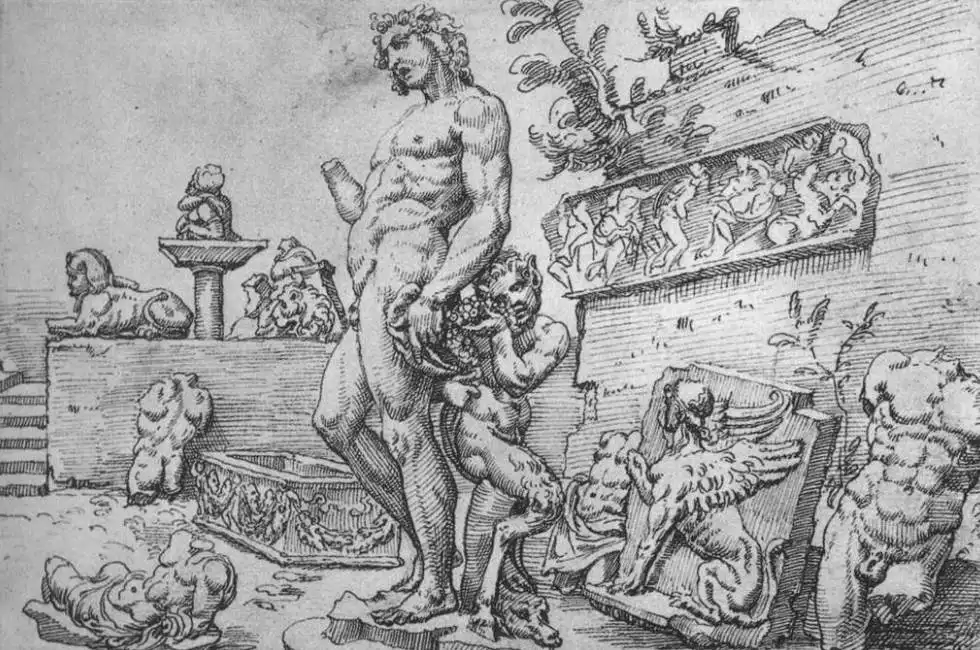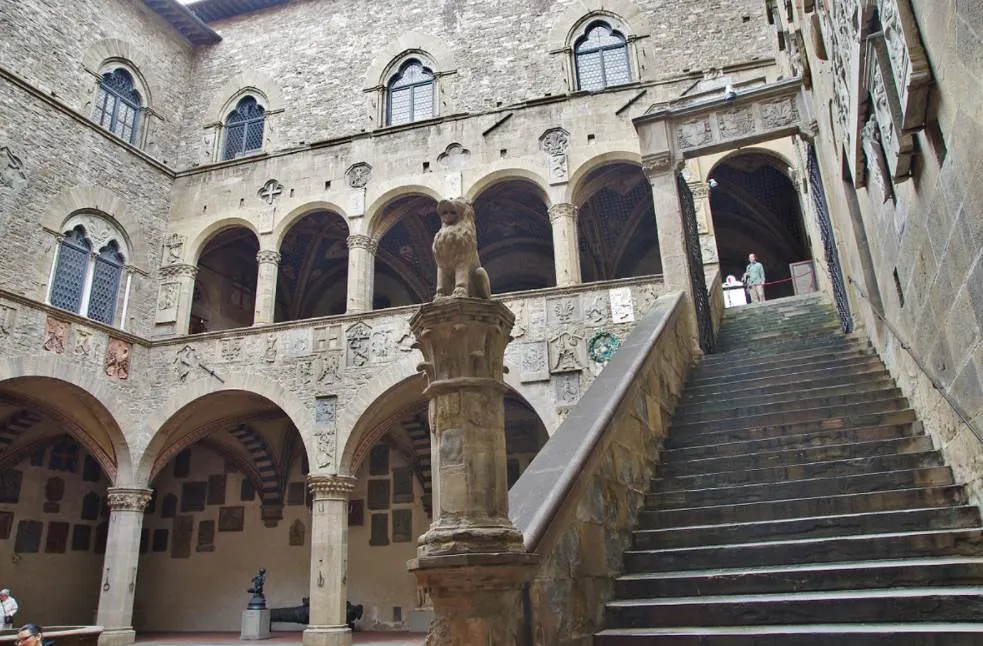Although Michelangelo di Lodovico Buonarroti Simoni (1475-1564), or simply “Michelangelo,” is recognized today as one of the greatest Renaissance artists in history, he still had to work hard in the beginning stages of his career to establish himself.
He even committed an actor of fraud when he tried to pass on one of his works like an ancient sculpture, an act that earned him both contempt and admiration from rich patrons in Rome.
In this article, we’ll take a closer look at some of the most interesting facts about Bacchus by Michelangelo, one of the surviving works of Michelangelo from his early period in Rome.
1. The statue was created in the late 15th century
Bacchus is one of just two surviving sculptures that Michelangelo created in Rome in the late 15th century. The other one is arguably one of his most famous works called the “Pietà,” a work that decorates St Peter’s Basilica in Vatican City.
The artist created the marble work between 1496 and 1497. This is just before he completed the masterpiece now in the largest church in the world which he completed between 1498 and 1499.
Michelangelo was born in the year 1475 which means that he was only 21 years old when he started working on this work of art. His career would end nearly 7 decades later as he hacked away at the “Rondanini Pietà,” 6 days before he passed away in 1564.

2. It was commissioned by the man who Michelangelo tried to rip off
The backstory about this sculpture is quite intriguing. The man who commissioned it was the same person as the man who was sold a sculpture called “Sleeping Cupid.” Michelangelo worked on this in an attempt to make it look as if it was an authentic ancient sculpture.
Cardinal Raffaele Riario discovered the fraud and was nonetheless impressed by the talent of the young Michelangelo that he invited him to Rome to pay retribution, a work that would become Bacchus.
The cardinal gave him a life-sized block of marble and demanded either a completed sculpture or a refund of 200 ducats. Needless to say that the then-broke Michelangelo started carving away immediately.

3. It depicts the Roman god of wine in a drunken condition

It’s believed that Bacchus by Michelangelo was inspired by a lost ancient sculpture referred to as “Bacchus, Drunkenness and a satyr.”
This ancient bronze sculpture was described by Roman historian Pliny the Elder and was created by an ancient Greek sculptor of the 4th century B.C. named Praxiteles.
The first thing that becomes clear is that Bacchus, the Roman god of wine, was depicted by the artist as being extremely drunk as he is focusing on the cup of wine that he is holding. He’s also off-balance and appears to be falling off the pedestal that he’s standing on, a clear sign of drunkness.
The figure behind Bacchus is a satyr, a mythical creature depicted as a man with a horses’ tail and a huge erection. He’s eating the grapes behind the main figure and it’s worth noting that the penises of both figures have been removed at some point before the 1530s.

4. The patron who commissioned it rejected the work
The huge sculpture of a naked drunken man with a feminine body wasn’t exactly the type of sculpture that Cardinal Raffaele Riario was looking for. After all, he wanted it to decorate the garden of his newly constructed Palazzo della Cancelleria which was completed between 1489 and 1513.
This means that he formally rejected the work after Michelangelo presented it to him. He certainly deemed it unsuitable to join his collection of sculptures from antiquity, but the exact reason remains a bit obscure.
Whether or not the prominent nakedness, the drunkenness of the main figure, or the fact that he deemed it too sinful to decorate his garden remains unclear. It eventually ended up in a garden not too far away as depicted by Dutch artist Maarten van Heemskerck in the 1530s.

5. It made its way from a Roman garden to Florence in the 16th century
Luckily for Michelangelo, some people did appreciate the talent of the artist. After the work was rejected by Cardinal Riario it was acquired by his banker and a personal friend of Michelangelo named Jacopo Galli.
The rich banker had a garden full of sculpture as well which was remarkably located just near the Pallazzo della Cancellaria in the historical heart of Rome.
It didn’t stay here because the powerful Medici family from Florence acquired it in the year 1572 after which it was transported to Florence.
It never left this fascinating city and can now be admired at the Palazzo del Bargello, a former prison that was transformed into a museum in the capital of the Tuscany region.

More interesting facts about Bacchus by Michelangelo
6. The sculpture was created from a single block of marble which was about life-sized. The result was a rather large sculpture that is slightly over life-sized and which stands 203 centimeters (80 inches) tall.
7. Sleeping Cupid was a small marble sculpture on which Michelangelo put an acidic substance to make it look ancient. This trick didn’t work as the renowned art collector Cardinal Riario quickly saw through the fraud.
This sculpture eventually ended up in London as it was brought to England by King Charles I in the 17th century. It’s assumed that it was destroyed during the great fire at the Palace of Whitehall in Westminster in the year 1698 along with several other artworks. One of these was the sculptural bust of King Charles I created by Gian Lorenzo Bernini.
8. It’s not hard to identify the naked drunken man as Bacchusor “Dionysus” as he’s also referred to. He was the main figure of the cult of Dionysus which traces back to Mycenaean Greece.
Some of these symbolic elements are the ivy leaves on Bachuss’ head, the cup of wine that he is holding, and the skin which is either of a tiger or a leopard, animals closely associated with Bacchus.

9. Just like Cardinal Riario, not everybody has been impressed with this work of the artist. Romantic artist and famous poet Percy Bysshe Shelley once wrote that the sculpture looks “drunken, brutal, and narrow-minded, and has an expression of dissoluteness the most revolting.”
This is in sheer contrast with a similar work by Michelangelo, a work that would end up defining his entire career, the Statue of David.
10. The sculpture is in good company at the Bargello Museum in Florence. It’s adjoined by another work attributed to Michelangelo called “Crucifix” and one of the most famous sculptures of the Renaissance, “David” by Donatello.

